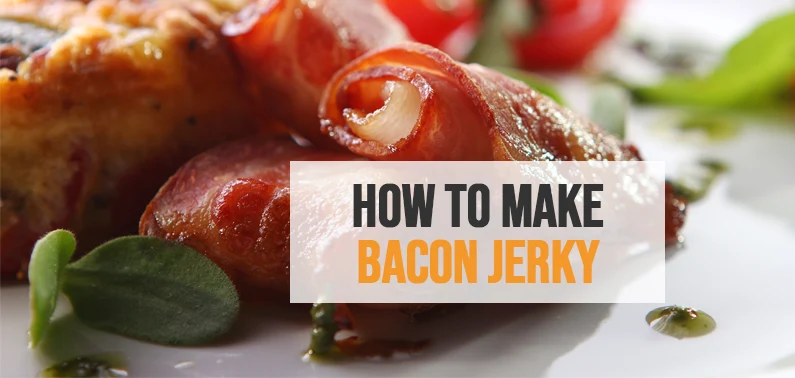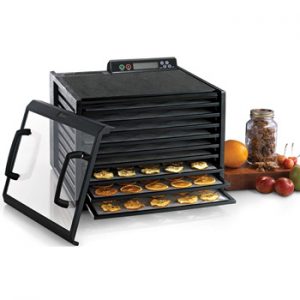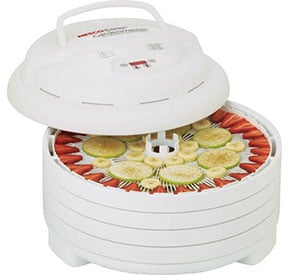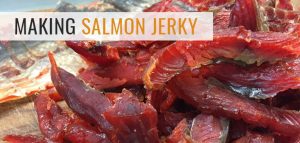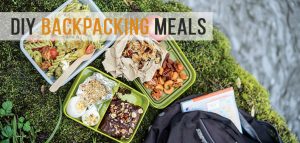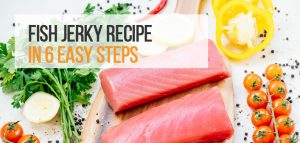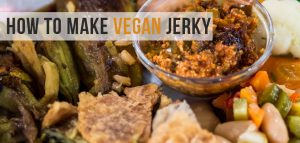10 Best Food Dehydrators in 2023 – Our Honest Reviews & Buyer’s Guide

We can all agree that everybody who takes care of their health wants to find a healthy solution to preserving food. And what is a better solution than homemade dehydrated meat, fruit, and vegetables?! Those are really easy to make if you own a dehydrator and this article will show you some of the best food dehydrators on the market today. Commercially dried food is often kept fresh by adding various preservatives that might be the cause of some health issues, mostly related to blood pressure (Source).
We are happy to inform you that you can easily avoid those problems by making dried food in your home using organic and healthy ingredients you’ve chosen.
Everything we said above gives you an idea why food dehydration is becoming more and more popular. Not only they will save you a lot of money, but also provide your family with healthy homemade snacks.
Our Quick Product Comparison
| IMAGE | PRODUCT | DETAILS | ||
|---|---|---|---|---|
Best Value 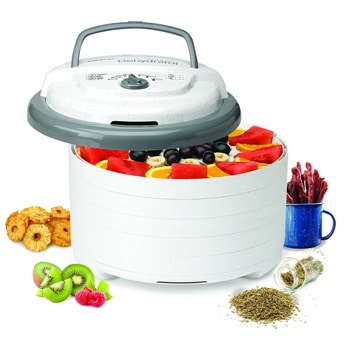 | Best Value |
| View Latest Price | |
Editor's Pick 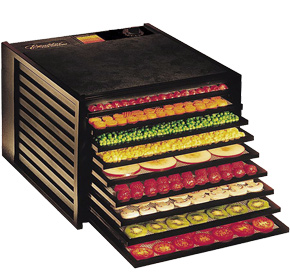 | Editor's Pick |
| View Latest Price | |
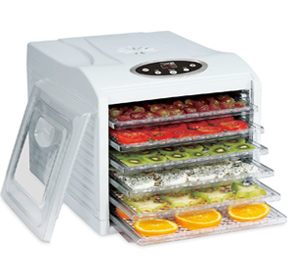 |
| View Latest Price | ||
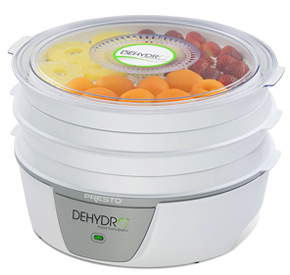 |
| View Latest Price | ||
 |
| View Latest Price | ||
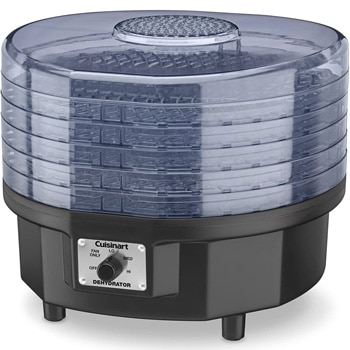 |
| View Latest Price | ||
 |
| View Latest Price | ||
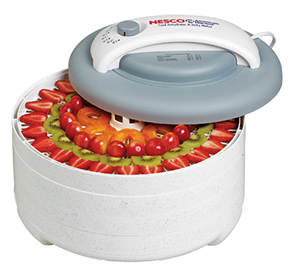 |
| View Latest Price | ||
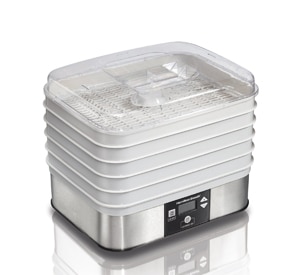 |
| View Latest Price | ||
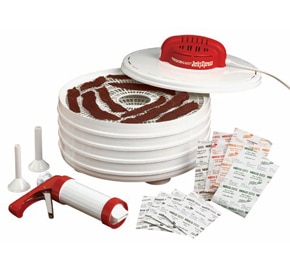 |
| View Latest Price |
TOP RATED FOOD DEHYDRATORS REVIEWED
Specifications:
- Air Flow: Vertical
- Temp Range (°F): 95-160
- Trays: 5
- Wattage: 600
- Timer: No

Features:
- This lightweight unit is quiet despite a 600 w heating fan which works with a thermostat.
- Included with this dryer is a total of four sheets and five trays. Two are with a mesh, and two are without, so users can dry a variety of foods. For example, the solid sheets are ideal for drying purees into rolls. In contrast, the flexible screens work well with herbs. It is also possible to expand this model up to 12 trays in height.
- This food dehydrator has an air flow design so that you spend less time tinkering and turning trays around.
- The adjustable thermostat has seven different settings printed above it, from 95°F to 160°F.
- There is also temperature information for various foods. All in all, the Nesco FD-75A is a great unit for drying herbs, vegetables, and fruit, and comes with a book for food dehydrator recipes.
Negative sides:
For its low price, this model does a fine job with many foods, but it can take more time than advertised. When we measured the actual temperature, we realized it was off by up to 10 degrees. If you live in a very humid area, you might experience longer drying times as a result.
Specifications:
- Air Flow: Horizontal
- Temp Range (°F): 95-155
- Trays: 9
- Wattage: 440
- Timer: No

Features:
- The first thing you’ll notice about this model is its size and weight. It’s 19 x 17 x 12.5″ and a whopping 22 pounds, so you’ll need to sacrifice some counter-top real estate to use it.
- Since this is a horizontal flow food dehydrator, the fan and heating element are in the back.
- When it comes to shelving, this food drying machine has nine plastic trays and fine white mesh sheets. That way, you can dry larger chunks of food as well as smaller slices or herbs. With so many slots available for trays, you can get more height, if necessary, by putting in less than the maximum.
- To set a drying temperature, users have a dial, and cheat-sheet available near the back of this unit. The dial goes from 95°F to 155°F, which makes the Excalibur 2900ECB good at drying a large amount of food; from herbs to jerky. It also has a fruit roll tray for making leathers.
Negative sides:
All in all, we didn’t notice many issues while trying this kitchen food dryer out. One of the few things that bothered us was the lid. It seemed flimsy, but it didn’t affect the drying time in a negative way.
Specifications:
- Air Flow: Horizontal
- Temp Range (°F): 95-158
- Trays: 6
- Wattage: 400
- Timer: Yes
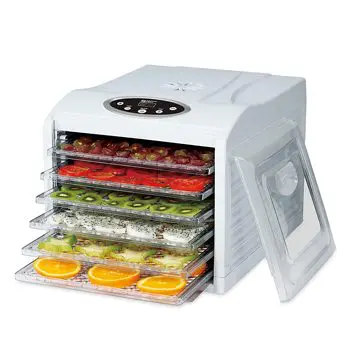
Features:
- At the heart of this dehydrator for food is a 400w rear-mounted fan which works with improved air flow technology.
- This design prevents overheating and ensures even drying, so you don’t need to rotate shelves.
- Those who like to set and forget can use the adjustable thermostat, timer and auto shut off feature.
- Users can program presets for temperatures ranging from 95°F to 158°F that run for up to 19.5 hours.
- What’s more, there’s a feature that protects from overheating.
- Out of the box, you get a total of 15 different racks which are adjustable by height. There are six stainless steel mesh sheets, six plastic mesh sheets, and three nonstick sheets. The included trays can handle anything from larger chunks of meat to small pieces of food. Thus, the Magic Mill is among the ideal dehydrators for drying meats, fruits, and vegetables.
- Finally, for easier clean-up, this model includes a drip tray.
Negative sides:
Despite the ease of use and great results, we noticed a few downsides during testing. For starters, the actual temperature can be 5-10 degrees lower than what the unit shows. Besides that, it is one of the bigger units on our test, so it’s not ideal if you lack space.
Need more info about this model? Read our complete review Magic Mill 6 Tray here!
Specifications:
- Air Flow: Vertical
- Temp Range (°F): 156
- Trays: 4
- Wattage: 600
- Timer: No

Features:
- This model comes with a system consisting out of four trays which stack are stack on each other.
- The heating element and fan are at the bottom and provide steady air flow, so there’s no need to rotate trays. To track progress, you can use the see-through cover.
- Both the trays and lid are dishwasher safe, so this dehydrator for food is quite practical.
- In total there are four drying trays included with the possibility to expand up to eight through accessories.
- Because this is such a low-cost model, there isn’t a timer or thermostat included. Instead, this unit works with a preset temperature of about 145°F. As a result, the Presto Dehydro is a good dehydrator for fruit, fish, meat and jerky. If you want to dry delicate herbs, for example, you won’t get the best results.
Negative sides:
When we mention disadvantages, you have to keep in mind this machine’s modest price-tag. This model is a cheap way to try out food drying but has one set temperature, so it’s not versatile. Furthermore, accessories and extra trays can be pricey. Finally, since you don’t get a timer, you will have to check on your food to make sure it’s done.
If you wish to learn more about Presto 06300 Dehydro model, our full review is just a click away!
Specifications:
- Air Flow: Vertical
- Temp Range (°F): 180
- Trays: 6
- Wattage: 250
- Timer: No
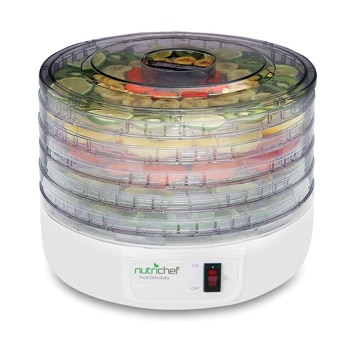
Features:
- This counter-top food dehydrator is compact and lightweight.
- It features a heating element in its base and a fan that helps keep a consistent airflow.
- When it comes to controls, this is a straightforward unit. It only has an on/off switch so it makes it simple, but not very versatile.
- When you start using this meat and fruit dryer, it will reach a top temperature of up to 180°F, so you will have to keep an eye out on your food.
- When you buy this model, you get six trays, including a lid, that stack on top of each other. They are made from see-through, food-safe plastic, so it’s easier to track the drying process.
- As far as shelf height goes, there are two options for every user. The first option is for thin slices with regular stacking, and the other is for thicker sliced food and relies on tabs.
Negative sides:
When we mention disadvantages, you have to keep in mind this machine’s modest price-tag. This model is a cheap way to try out food drying but has one set temperature, so it’s not versatile. Furthermore, accessories and extra trays can be pricey. Finally, since you don’t get a timer, you will have to check on your food to make sure it’s done.
Specifications:
- Air Flow: Vertical
- Temp Range (°F): 110-175
- Trays: 9
- Wattage: 620
- Timer: No

Features:
- This kitchen dehydrator has a heating element on the bottom along with a fan that provides good airflow.
- Wanting to make this a simple-to-use device, Waring designed a dial that has four settings. These presets are “fan only”, “low”, “medium” and “high”. According to the manual, low is around 110°F, medium around 140°F, and high about 175°F. If you don’t know your temps, this means you can dry veggies, fruits, and meats.
- As far as trays go, this dehydrator for vegetables and meat comes with five that stack one over the other. They’re made from food-safe plastic and have a wider than usual mesh. This makes them better for meats and larger chunks of food in our opinion. Since there’s no way of changing the height between each drying plate, you will have to be careful when cutting up veggies or protein.
- For those that like to make fruit leather, there’s also a solid tray included in this package. All in all, the Cuisinart DHR-20 is a great food dryer for jerky, rolls, and vegetables.
Negative sides:
While trying this model out, there was one flaw that stood out. Namely, the meshes on each interlocking shelf are wide and small pieces of food or herbs can fall through. Other than that, it was a bit louder than other units.
Specifications:
- Air Flow: Horizontal
- Temp Range (°F): 90-160
- Trays: 6
- Wattage: 500
- Timer: No
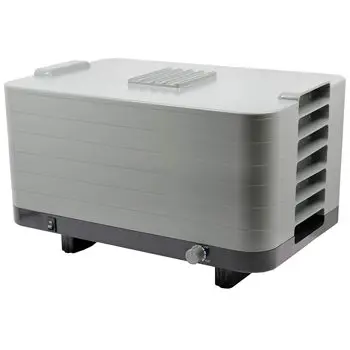
Features:
- This Korean made food dehydrator is lightweight at 11 pounds, but on the larger side at 10 x 17 x 11.8″.
- The Heat for drying comes from the bottom and gets pushed up with the help of a fan.
- With this jerky and fruit dryer, you get six trays in total, with 12 being the limit. Each of the six shelves has a fine mesh insert which prevents diced foods or herbs from falling through.
- On top of that, there are two fruit leather sheets in the package.
- Located on the bottom are two different controls. There’s one on/off switch and a temperature dial that goes from 93-154°F which works with a heat sensor for reliable drying.
- We didn’t find a limit to how much this food drying unit can handle, but tests show it can work with 6-7 lbs or jerky or fruit. That is more than a good result.
Negative sides:
When we put this food drying machine to the test, we discovered a few minor issues. The biggest one is that it’s not recommended to put the trays in a dishwasher. Besides that, we had to move shelves more often than we’d like when the dehydrator was filled.
Check our our complete review of L’Equip 528 by clicking this link!
Specifications:
- Air Flow: Horizontal
- Temp Range (°F): 95-155
- Trays: 5
- Wattage: 500
- Timer: No

Features:
- The heat source and fan on this food dehydrator are built into the lid.
- You can control the drying temperature with a dial which also turns this device on.
- The available range goes from 95°F to 160°F.
- For quick help, Nesco has a temperature reminder printed on the top.
- As a stackable unit, this model comes with five plastic trays.
- There are also a few other accessories included which make the Nesco FD-61WHC the perfect food dryer for preparing fruit treats and snacks. First of all, you get a solid fruit roll sheet for drying out jams. Then there’s a jerky gun which can squeeze out fruit puree or minced meat. This gun has three attachments of its own: two for tube shapes and one for sheets. Other than that, there’s a clean-a-screen for herbs and foods that tend to stick to trays.
Negative sides:
Although this model tried many things well, there were some issues that we have to mention. On high settings, this dehydrator for fruit can run hot. Thus, you might need to lift the lid occasionally to prevent overheating and damage. This problem solves itself because you need to check food and rotate packed trays anyway.
Specifications:
- Air Flow: Vertical
- Temp Range (°F): 100-160
- Trays: 5
- Wattage: 500
- Timer: No
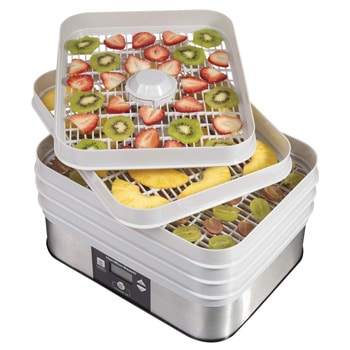
Features:
- This food dehydrator has a heat element and fan in its sturdy metal base. It comes with 5 BPA-free plastic trays that stack and a few accessories as well.
- There’s a solid sheet for making fruit rolls and a finer mesh sheet that’s ideal for herbs.
- Once you’ve placed everything inside and put on the lid, you can program the digital panel located on the front of the base. With these controls, users can set temperature in 5-degree increments, from 100°F to 160°F, and drying time (up to 48h).
- Another useful feature is the automatic shut-off which makes dehydrating food easier.
- The lid on this unit is clear so that you can check progress at any time, at least in the top tray. Overall, the Hamilton Beach 32100A is the best food dryer for the money in our opinion.
Negative sides:
However, there are a few downsides, but they are not significant enough to leave a bad impression. First, the fan can be noisy if you are near this machine. Aside from that, we had to rotate trays with more food, and the temperature was a bit lower than what the controls showed.
Specifications:
- Air Flow: Vertical
- Temp Range (°F): 160
- Trays: 4
- Wattage: 350
- Timer: No
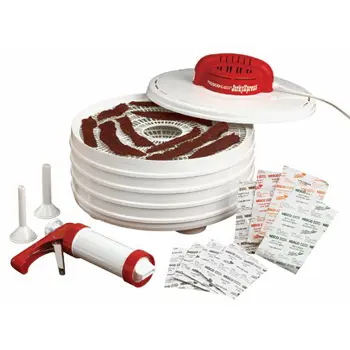
Features:
- This dryer for food has four round plastic trays, each 13.5″ wide.
- Then there are two solid sheets for making fruit leather and two fine mesh covers for smaller or diced produce.
- Since this is a jerky making machine, it comes with a gun with three tips to squeeze out minced meat and four packs of different seasonings. You can also use the gun with fruit or vegetables purees and jams to make rolls.
- The heating element is on the lid, which makes it a vertical flow model that has a fan pushing air down.
- If you have limited space in your kitchen, you will like this unit. Its dimensions are 14 x 8 x 14″ and it weighs only 5.5 lbs, so it’s easy to move around.
- Unfortunately, there are no timers or knobs available on this food dehydration machine; it has a fixed temperature of about 165°. Thus, the Nesco FD-28JX is best for making jerky and meat drying, but not so much for herbs.
Negative sides:
While we tried out this dehydrator for meat and fruit, we noticed that the fan could be quite loud sometimes. Because there’s no timer, we also had to check on progress as well as rotate trays due to minor airflow issues.
Types of Dehydrators
Stacked Food Type
Stackable or vertical flow food dehydrators have a heating element that is located at the bottom or the top (lid). These units are among the most affordable on the market, but they have their downsides.
The biggest disadvantage is the fact that they don’t spread heat as evenly as box and shelf machines. Many models of this type have a fan that improves problems with airflow. With others, users have to check on their food more often and rotate trays on occasion.
Vertical flow dehydrators work well for many fruits, vegetables, and herbs. But, when making jerky, you will need to wait longer and have a more hands-on approach. You need to put in more effort to switch and move trays around to get better and quicker results.
PROS
-
- They are usually very affordable units
- Regarding size, they don’t take up much space on your kitchen counter
- They can be expanded. A lot of stackable units can work with extra shelves
CONS
-
- They aren’t as good at spreading heat as horizontal flow models
- They work better with vegetables and fruits than with meat
 Stacked Food Dryer We Recommend:
Stacked Food Dryer We Recommend:
Nesco FD-75A
Box and Shelf
Horizontal flow or shelf and box dehydrators work more like your typical oven. They have a heating source in the back and a fan that can be at the top or in front of the heater. When it comes to price, they tend to be pricier than stackable models but offer improved performance.
Specifically, they’re better at maintaining an even temperature throughout the unit. This is what makes them a superior option for drying larger quantities of produce and for making jerky. Because there’s a balanced airflow, you don’t have to check on these devices as much. This makes them simpler to use, especially if they have a timer included.
Moreover, there’s usually no need to rotate trays, so you can start them up and leave them to work. Some units also have an automatic shut-off feature for added safety.
PROS
-
- They provide a more even temperature and are more efficient
- They are suitable for tough vegetables and various meats
- Easier to use because they don’t need checking
- They can handle more challenging tasks
CONS
-
- They are often more expensive than models with stackable trays
- Most are also large, so they need more space on your counter
 Our Product of Choice:
Our Product of Choice:
Excalibur 2900ECB
Things to Consider – Food Dehydrator Buying Guide
Temperature and Air Flow
How to Use a Food Dehydrator?
This video is a good beginners guide and it’s just over two minutes.
Are you a novice at food dehydration? Check out our complete guide!
What Can You Do and Make?
If you’re in the market for a food dehydrator, you probably want to know what you can make with one. There’s good news for people that like to experiment because these kitchen appliances can help boost your creativity. These devices are small, compact and versatile, and add a new dimension to your meals and cooking. Here are some of the things you can do with one such unit:

Make Healthy and Crispy Snacks from Fruits and Vegetables
Everyone loves a crunchy texture, but it is most often associated with deep frying and unhealthy diets. If you dehydrate your food, dull vegetables like kale and spinach or fruits can be turned into delicious and long-lasting treats.
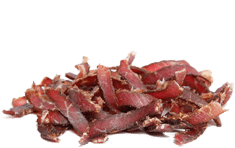
Using a Food Dehydrator for Fish and Meat
If you mention dehydration, you have to mention jerky. But, beef is not the only meat that can be dehydrated. Fish can also be preserved into something tasty.
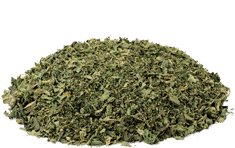
Make Your Teas, Spices and Dried Herbs
A lot of the time, store bought herbs and teas are bland or have added flavors. They can also contain fillers or harmful preservatives. Growing your plants isn’t hard and dehydrating them is easy. Once you try homemade mint tea, for instance, you will never look back.
Food Dehydrator Recipes You Need To Try
Easy Dehydrated Watermelon Recipe Anyone Can Make
Watermelon is often at our tables and it is a favorite summer fruit for many people, including kids. But what about dehydrated watermelon that you can eat all year round? This gluten-free and sugar-free healthy watermelon jerky can be dehydrated easily. The process of...
How to Make Bacon Jerky in 7 Easy Steps
Bacon jerky is quite a popular snack in US households. So, instead of spending countless amounts of money on this store-bought treat, did you know you can make one at home? However, people are often put off because they believe that preparing bacon jerky is quite...
How to Dry Basil in 5 Easy Steps
Dried herbs are generally three to four times stronger than fresh ones, and basil is one of the most versatile herbs to have in your kitchen. The plant’s leaves are the main component in pesto sauce, while fresh ones are used in sandwiches, salads, omelets, roast...
Dehydrated Strawberries Recipe
Dehydrated strawberries are one of the popular snacks you can combine with your cereal, as part of a trail mix blend of dried nuts and fruits, or put into smoothies. The great thing about these berries is the fact that they keep color and flavor without an acidic...

 Stacked Food Dryer We Recommend:
Stacked Food Dryer We Recommend: Our Product of Choice:
Our Product of Choice:
